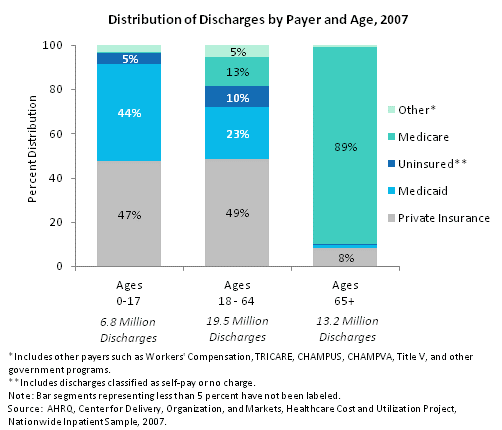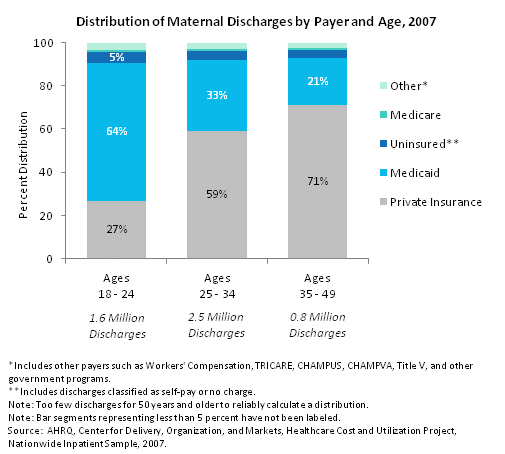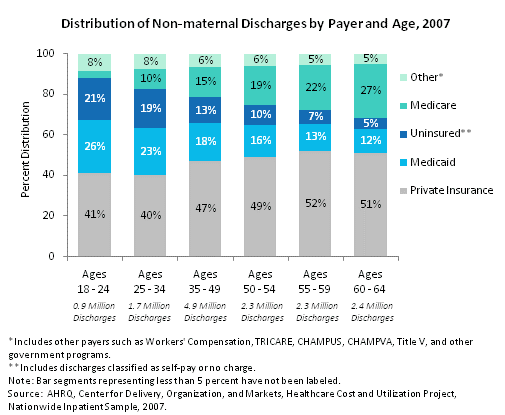EXHIBIT 5.4 Patient Age by Payer
PDF

(text version)
The expected primary payer for hospitalizations varies by age, in part because government programs design eligibility criteria to target specific groups, such as children, pregnant women and families and the elderly, that are concentrated in specific age ranges.
- In 2007, nearly half of discharges among patients 0-17 years (47 percent) and 18-64 years (49 percent) were billed to private insurance. Only 8 percent of stays among patients 65 and over were billed to private insurance.
- Among 0-17 year olds, 44 percent of discharges were billed to Medicaid. Smaller shares of discharges in other age groups were the primary responsibility of Medicaid: 23 percent of stays among 18-64 year olds and less than 5 percent of stays among patients 65 and older.
- Among patients 65 and older, the majority (89 percent) of stays were billed to Medicare. In contrast, 13 percent of stays among 18-64 year olds and less than 1 percent of stays among 0-17 year olds were billed to Medicare.
- About 10 percent of discharges for 18-64 year olds were uninsured, compared to 5 percent of discharges among 0-17 year olds and 1 percent of discharges among patients 65 and older.

(text version)
A large proportion of Medicaid and private insurance hospitalizations during the childbearing years are for maternal discharges.
- Medicaid was the primary payer for 64 percent of maternal discharges among 18-24 year olds, about one-third of maternal stays among 25-34 year olds, and 21 percent of maternal stays for 35-49 year olds.
- Private insurance was billed for 27 percent of maternal stays for 18-24 year olds, 59 percent of maternal stays for 25-34 year olds, and 71 percent of maternal stays for 35-49 year olds.
- About 4-5 percent of maternal stays among all age groups were uninsured.

(text version)
- In 2007, 35-49 year olds accounted for the largest number of non-maternal discharges (4.9 million discharges), followed by patients 60-64 (2.4 million), and patients 50-54 and 55-59 (2.3 million each). Younger patients had fewer non-maternal discharges (1.7 million for 25-34 year olds and 0.9 million for 18-24 year olds).
- Twenty-seven percent of stays among 60-64 year olds were billed to Medicare, compared to less than 5 percent of non-maternal stays among 18-24 year olds. This rising share reflects increasing disability with age, which can qualify some individuals younger than 65 for Medicare coverage.
- About 40 percent of stays among patients 18-24 and 25-34 years old were billed to private insurance. Stays billed to private insurance accounted for 47 to 52 percent of stays among 35-64 year olds.
- Among 18-24 year olds, stays billed to uninsured and Medicaid accounted for 47 percent of stays (21 percent and 26 percent, respectively). In contrast, uninsured and Medicaid stays accounted for only 17 percent of all stays among 60-64 year olds (5 percent and 12 percent, respectively).
Previous Next